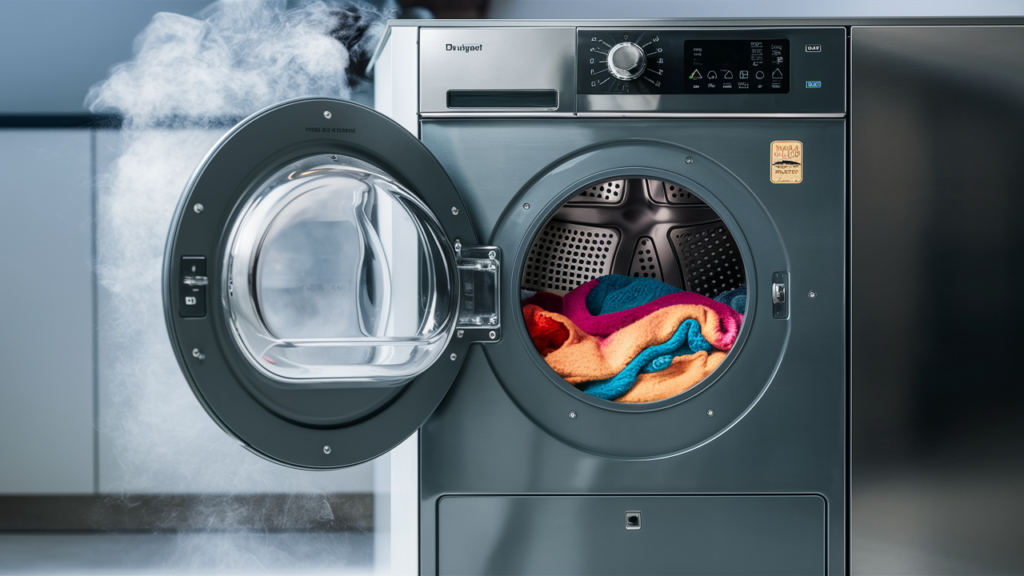
If your Whirlpool gas dryer isn’t heating properly, the gas valve assembly might be the culprit. This component controls the gas flow to the burner, making your dryer heat properly. Fortunately, replacing a faulty gas valve assembly is a manageable DIY task that can be completed in under an hour with the right tools and precautions.
Common Signs of a Faulty Gas Valve Assembly
Identifying the problem early can save time and money. Some common symptoms of a defective gas valve assembly include:
- The dryer drum spins, but there’s no heat.
- The dryer heats intermittently or unevenly.
- A smell of gas is noticeable while the dryer is in use.
- The igniter glows, but the burner does not light.
If you notice any of these signs, it’s likely time to replace the gas valve assembly.
Tools and Materials You’ll Need
- Phillips-head screwdriver
- 1/4-inch nut driver
- 5/16-inch nut driver
- Small flat-head screwdriver
- Pliers
- Adjustable wrench
- Teflon tape
- Wood block
- Whirlpool gas valve assembly kit 280119 (make sure it’s compatible with your dryer model)
Safety First
Before diving into the repair, prioritize your safety. Follow these essential safety tips:
- Power Off the Dryer: Disconnect the dryer from the power source by unplugging it or turning off the circuit breaker. This eliminates the risk of electrical shock.
- Shut Off the Gas Supply: Prevent gas leaks by turning off the gas supply valve before starting the repair.
- Let the Dryer Cool: If the dryer has been recently used, allow sufficient time for it to cool down completely.
- Work in a Clear, Well-Lit Space: Make the work area well-lit, clutter-free, and safe from distractions, such as children or pets.
- Dry Hands and Workspace: Never work with wet hands or in damp conditions to avoid accidents.
- Follow the User Manual: Check your dryer’s manual for specific instructions or warnings related to the repair.
- Handle Parts Gently: Avoid using excessive force when removing or installing components to prevent damage.
- Wear Protective Gear: Use insulated work gloves to guard against sharp edges, and consider safety glasses or a dust mask if you’re dealing with debris or chemicals.
- Avoid Live Wires: Refrain from touching exposed wires or terminals. Use non-conductive tools or insulating gloves when working near electrical components.
- Be Cautious with Tools: If testing voltage or using tools like a multimeter, make sure you’re familiar with safe practices to avoid short circuits.
How to Replace the Gas Valve on a Whirlpool Dryer
Disassemble the Dryer
- Turn off the dryer and unplug it.
- Turn off the gas supply and disconnect the gas supply hose.
- Use a 1/4-inch nut driver to remove the two screws securing the back panel.
- Slide the top panel back and lift it off.
- Remove the control panel screws, detach the wire connections, and slide out the panel.
- Open the dryer door and remove the lint screen.
- Remove the Phillips screws along the inside of the front panel.
- Close the door, tilt the dryer back slightly, and place a wood block under the front legs for support.
- Use a 1/4-inch nut driver to remove the front panel screws and disconnect the wire plug.
- Lift off the front panel.
- Remove the blower housing bracket screws and spring clip.
- Unscrew and remove the top brace and detach the front bulkhead.
- Disconnect the belt from the pulleys and slide out the drum.
Remove the Old Gas Valve
- Use a small flathead screwdriver to detach the coil and igniter wire plugs from the valve.
- Unscrew the gas pipe at the back using a 1/4-inch nut driver.
- Remove the bracket screws securing the assembly with a 1/4-inch nut driver.
- Maneuver the assembly out carefully, rotating it to clear the bottom bracket around the green wire.
- Remove the mounting bracket from the defective valve and discard the old valve.
Install the New Gas Valve
- Position the igniter on the new valve and secure it with the provided screw using a 5/16-inch nut driver.
- Slide the mounting bracket onto the new valve assembly.
- Feed the gas pipe through the back opening of the dryer.
- Position the assembly and engage the bracket tab in the slot.
- Use a 1/4-inch nut driver to secure the bracket screws.
- Reconnect the coil and igniter plugs to the valve.
- Tighten the gas pipe screw at the back using a 1/4-inch nut driver.
Reassemble the Dryer
- Slide the drum back into place and loop the belt around the pulleys.
- Reattach the front bulkhead and top brace bracket.
- Secure the front panel using both Phillips screws and 1/4-inch screws.
- Reinstall the control panel and top cabinet panels using a 1/4-inch nut driver.
Reconnect and Test the Dryer
- Wrap Teflon tape clockwise around the threads of the gas line and adapter.
- Hand-tighten the gas line and adapter, then use pliers and a wrench to tighten them securely.
- Turn on the gas supply to the dryer.
- Reconnect the dryer to the power supply and test for proper operation.
Tips for Maintenance After Replacement
Once the replacement is complete, regular maintenance can prolong the life of your dryer and prevent future issues:
- Clean the Dryer Vent: Lint buildup can affect airflow and heating performance.
- Inspect the Gas Lines: Periodically check for wear or leaks in the gas supply line.
- Schedule Routine Inspections: Consider professional servicing every few years to address any potential problems.
Surprisingly, many expensive dryer problems boil down to this simple fix. So, if your dryer stops heating, you’ll know exactly what to do and how to do it safely. Follow the steps carefully, stay safe, and take pride in tackling this project yourself.
